Genetic Regulation of Hematopoietic Stem Cells
The study of normal and malignant hematopoiesis is essential to identify actionable mechanisms in leukemic cells without alterations in normal hematopoiesis. We are studying the role of the Krüppel-like factor 4 (KLF4) in blood cells, normal hematopoietic stem cells (HSC), and malignant leukemic stem cells (LSC) because of its role in the reprogramming of somatic cells into induced pluripotent stem cells and the self-renewal of embryonic stem cells. Because KLF4 controls gene expression through different mechanisms (e.g., activation/repression via DNA binding, binding to methylated promoters, protein-to-protein interactions, and enhanceosome formation), loss-of-KLF4 models in HSCs and LSCs show either activation or inhibition depending on the cellular context and presence of oncogenic drivers (Figure 1). KLF4 promotes monocytic differentiation and NK cell survival (J. Leukocyte Biology, 2012) and inhibits homeostatic proliferation of naïve T cells (Nature Immunology, 2009).
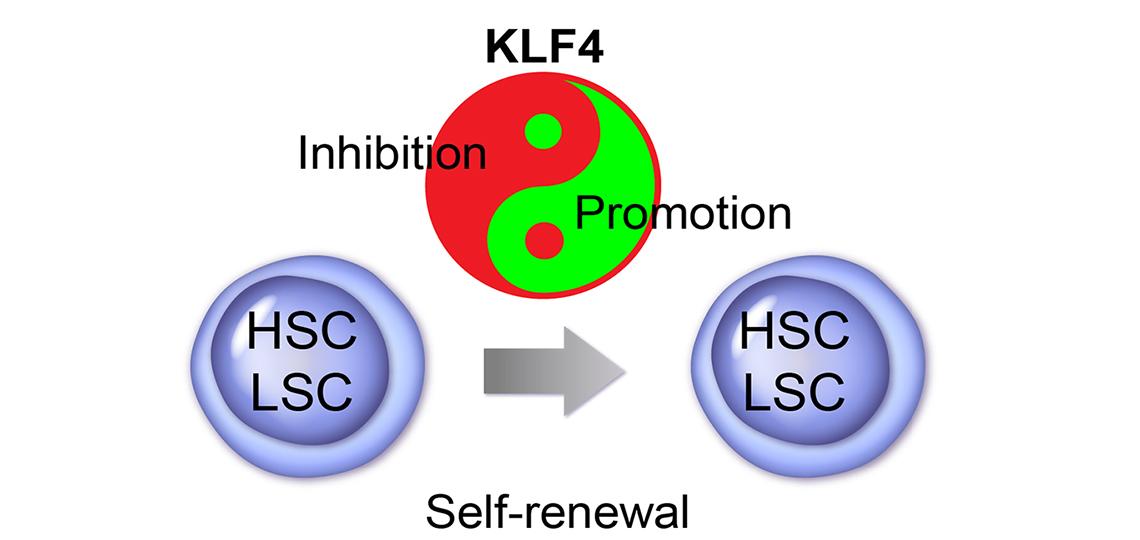
Pathobiology and Therapy of Leukemias
The leukemogenic process involves the transformation of HSCs or HPCs into LSCs/LICs that drive leukemia. Our studies show that KLF4 promotes self-renewal and maintenance of LSCs in chronic myeloid leukemia (CML) and acute myeloid leukemia (AML), whereas KLF4 has a tumor suppressor role in pediatric T-cell acute lymphoblastic leukemia (T-ALL) (Figure 2).
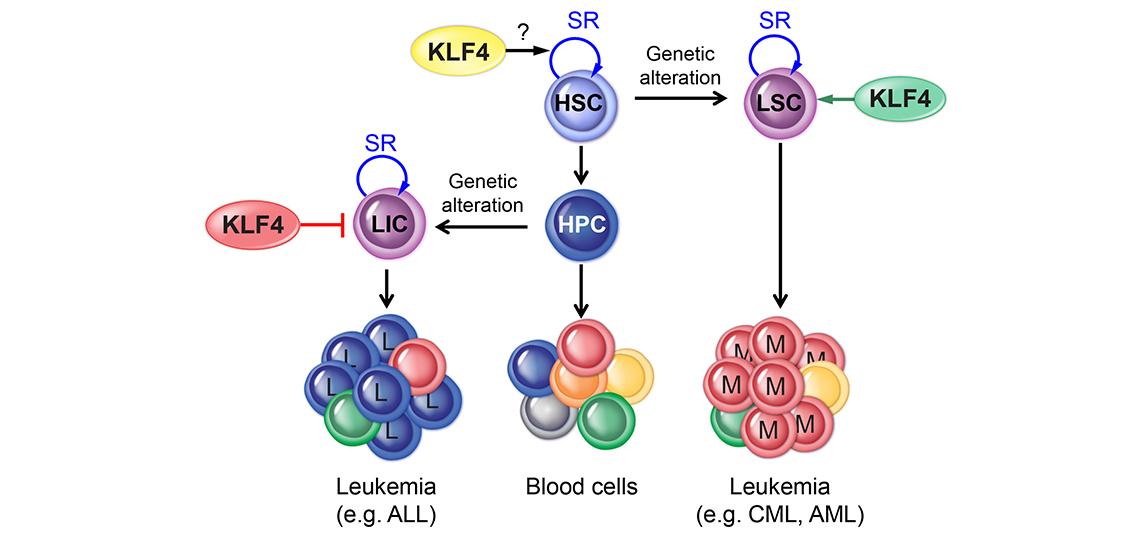
Acute lymphoblastic leukemia (ALL) is a deadly blood cancer and the most common hematological malignancy in pediatric patients. ALL is classified based on the type of lymphocytes involved as B-ALL and T-ALL. T-ALL has the worst prognosis and higher risk for relapse than B-ALL. Although treatment has improved clinical outcomes, with 5-year relapse-free survival rates greater than 80%, the prognosis worsens in patients with the refractory or relapsed disease when remission rates drop in each bone marrow relapse. We found that conditional deletion of the Klf4 gene in the NOTCH1-induced T-ALL mouse model shows aggressive leukemia and features expansion of LICs (Leukemia, 2017) (Figure 3a). Children with T-ALL also show inactivation of the KLF4 gene by CpG methylation. Genetic (mouse model) and epigenetic (T-ALL patients) loss-of-KLF4 was associated with aberrant activation of MAP2K7. We are currently developing MAP2K7 inhibitors as anti-leukemic agents in pediatric T-ALL (Figure 3b).
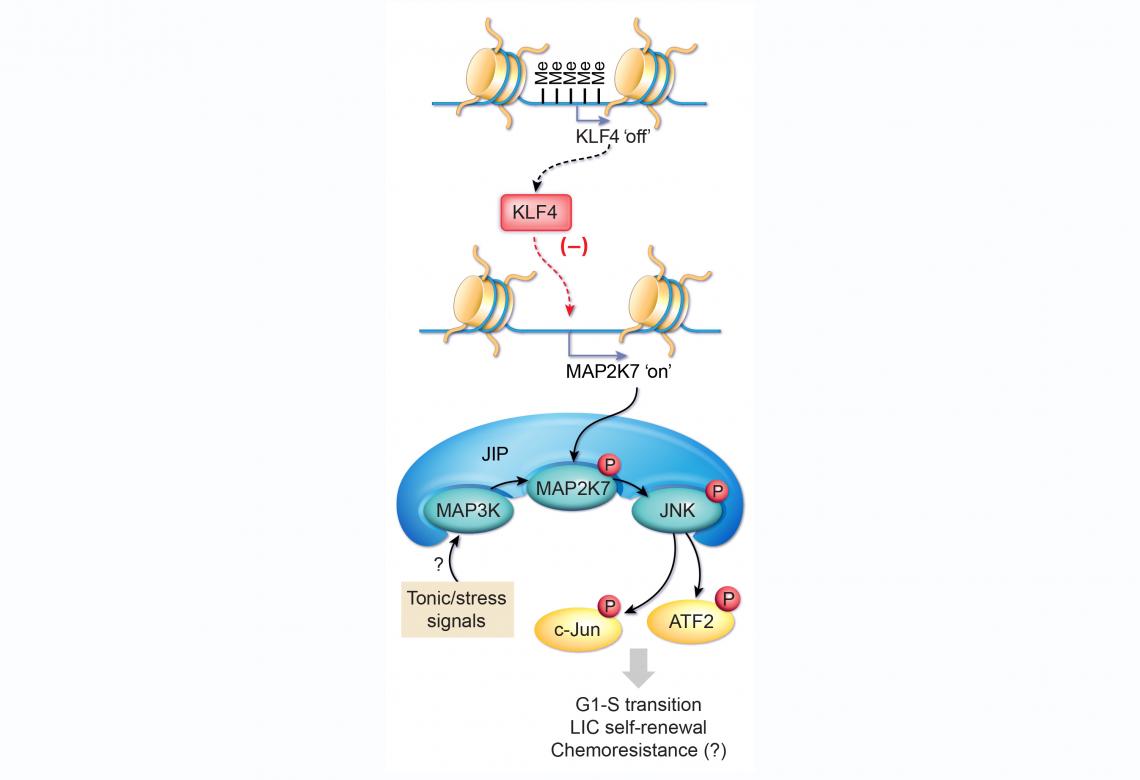
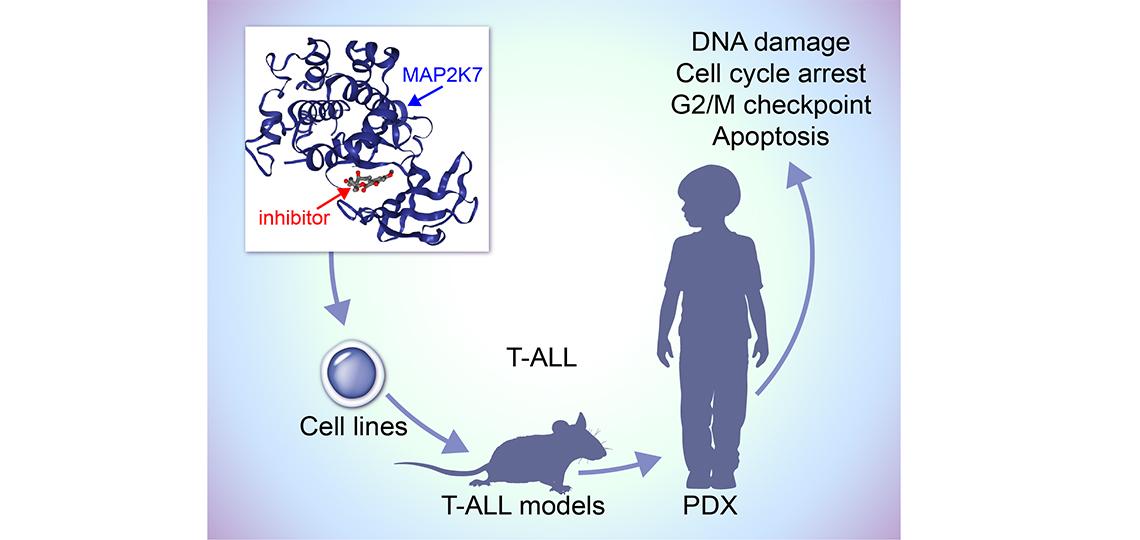
Chronic myeloid leukemia (CML) is a hematological malignancy originating from HSCs by expressing the constitutively activated BCR-ABL1 tyrosine kinase, which is a product of the chromosomal translocation t(9;22). This myeloid neoplasm is usually diagnosed in the initial chronic phase but can progress, if left untreated, to a lethal myeloid or lymphoid blast crisis through an accelerated phase. Although CML can be successfully managed by inhibiting BCR-ABL kinase activity with tyrosine kinase inhibitors (TKIs), most patients in deep molecular remission (DMR) must remain on therapy because this treatment cannot efficiently eradicate leukemic stem cells (LSCs) (Figure 4). Discontinuation trials in patients who have maintained complete molecular remission for at least two years have shown some success; however, 60% of patients relapse. This evidence also indicates that the development of LSC-directed therapy to prevent reactivation of BCR-ABL1-positive LSCs during the discontinuation of chemotherapy and induce treatment-free remission (TFR) remains an unmet medical need.
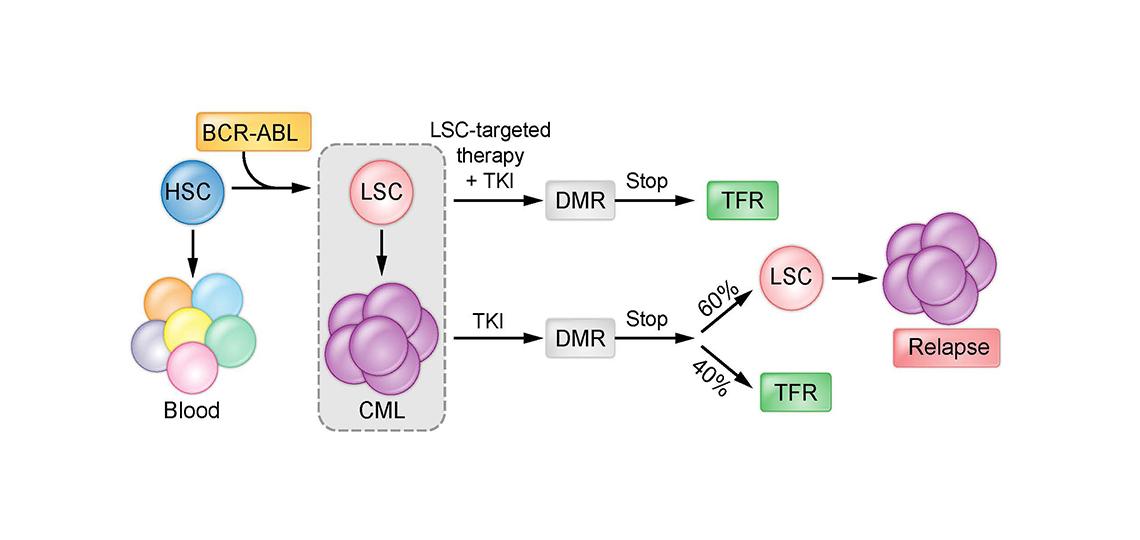
Our study shows that KLF4 represses the kinase DYRK2 in CML LSCs and that DYRK2 is also proteolyzed by the proteasome (Blood, 2019). Upregulation and stabilization of DYRK2 by loss-of-KLF4 or inhibition of SIAH2, ubiquitin ligase involved in DYRK2 proteolysis, with vitamin K3 showed anti-leukemic properties in CML by targeting the LSC population (Figure 5). We are currently developing cell-based approaches to screen for drugs to stabilize DYRK2 in CML cells and eradicate LSCs.
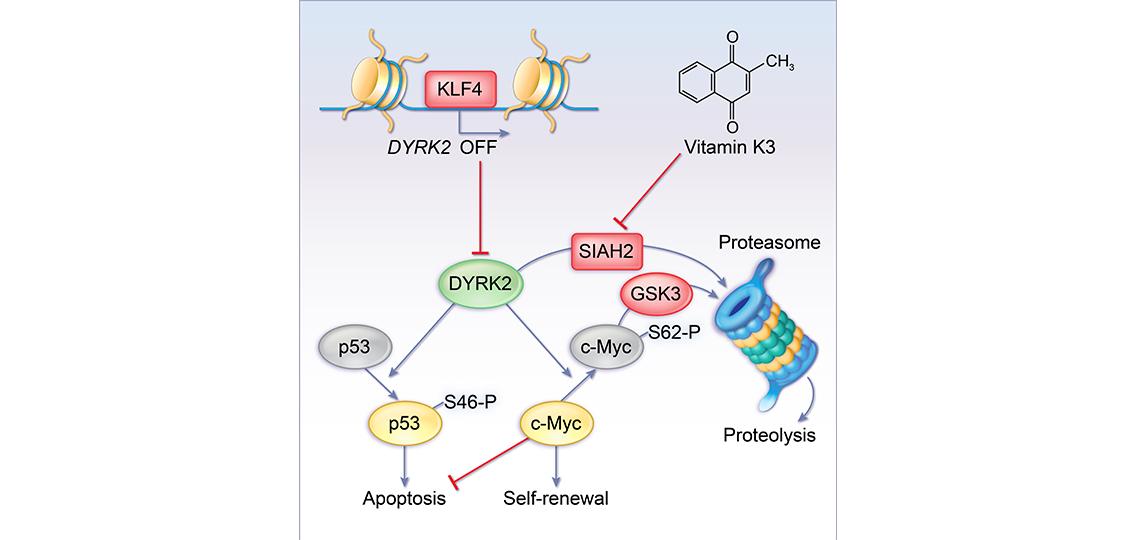
Development and Function of Lymphocytes
Lymphocytes are cells with an essential function in the adaptive immune response that share many key properties with HSCs, particularly quiescence, longevity, and differentiation potential (effector T cells, memory T cells). We described that the transcription factor ELF4 induces cell cycle arrest in naïve T cells by activating KLF4 downstream of the T cell receptor (TCR) and the mammalian target of rapamycin (mTOR) signaling (Nature Immunology, 2009; Journal of Immunology, 2010). Furthermore, loss-of-ELF4 impaired memory CD8 T cells (European Journal of Immunology, 2013) and increased differentiation of Th17 CD4 T cells (Journal of Immunology, 2014). We are integrating our knowledge of immunity into the leukemogenic process.








